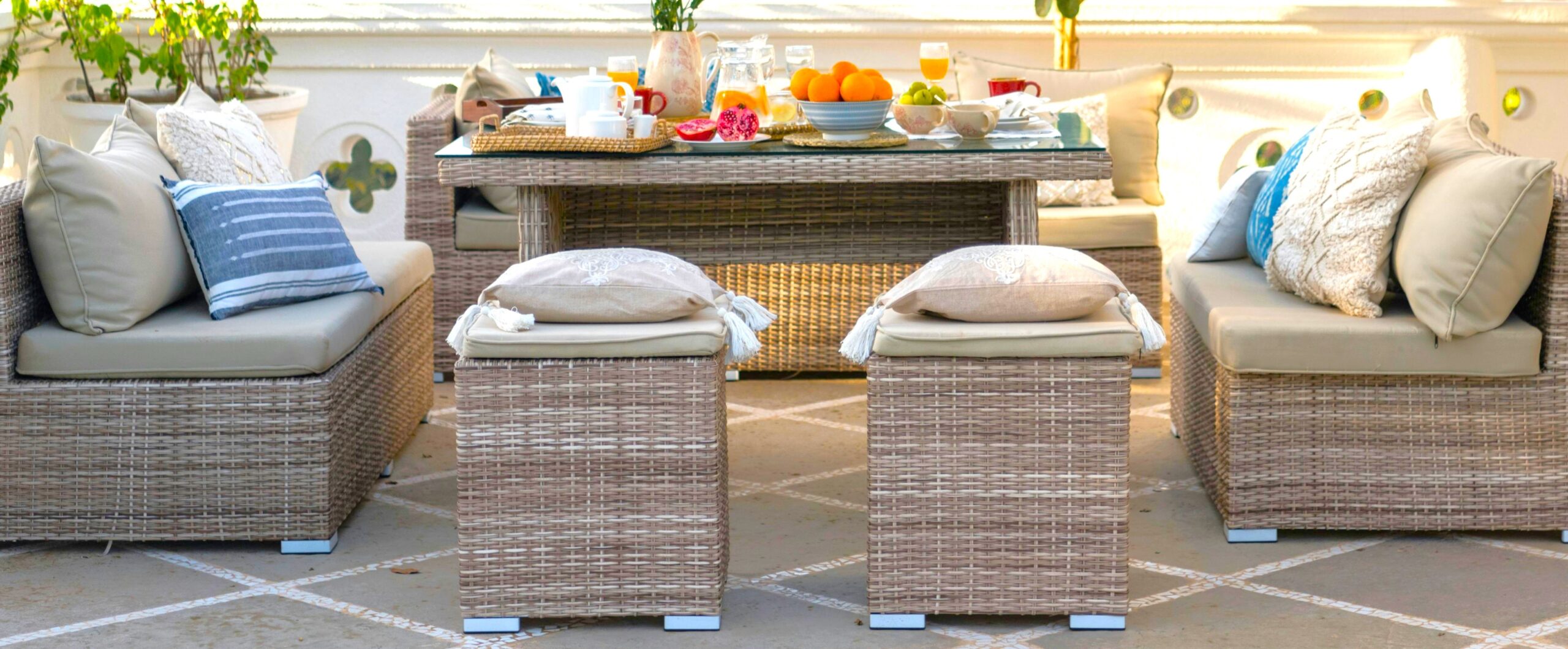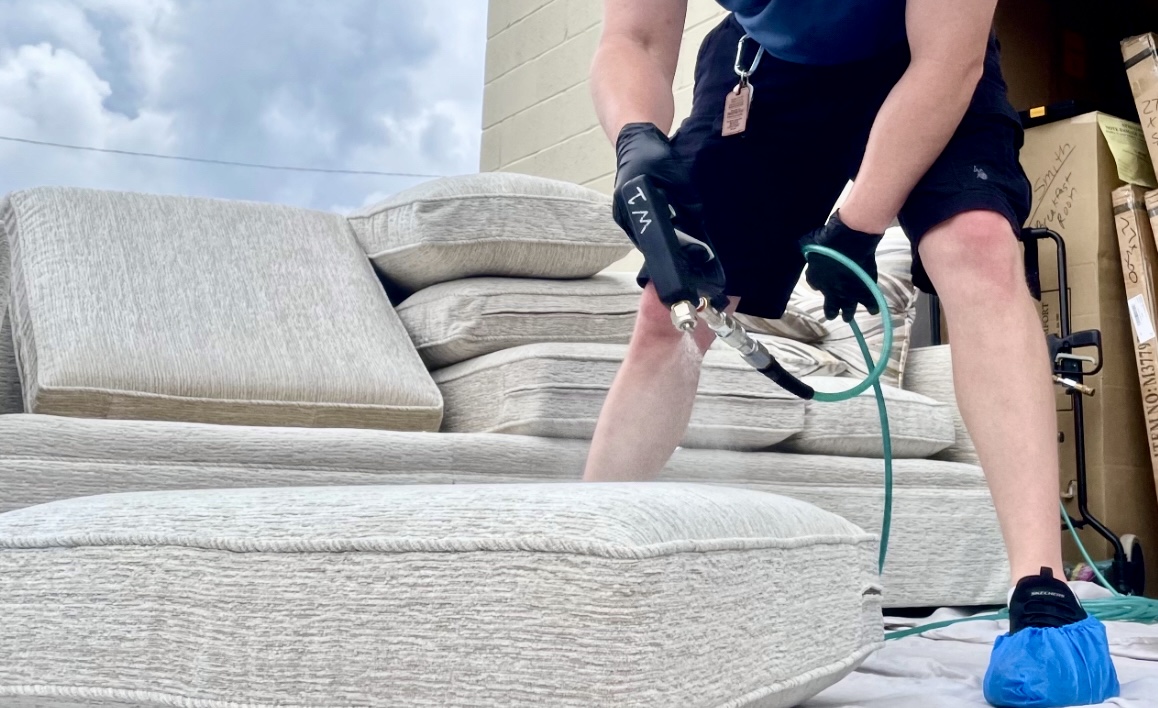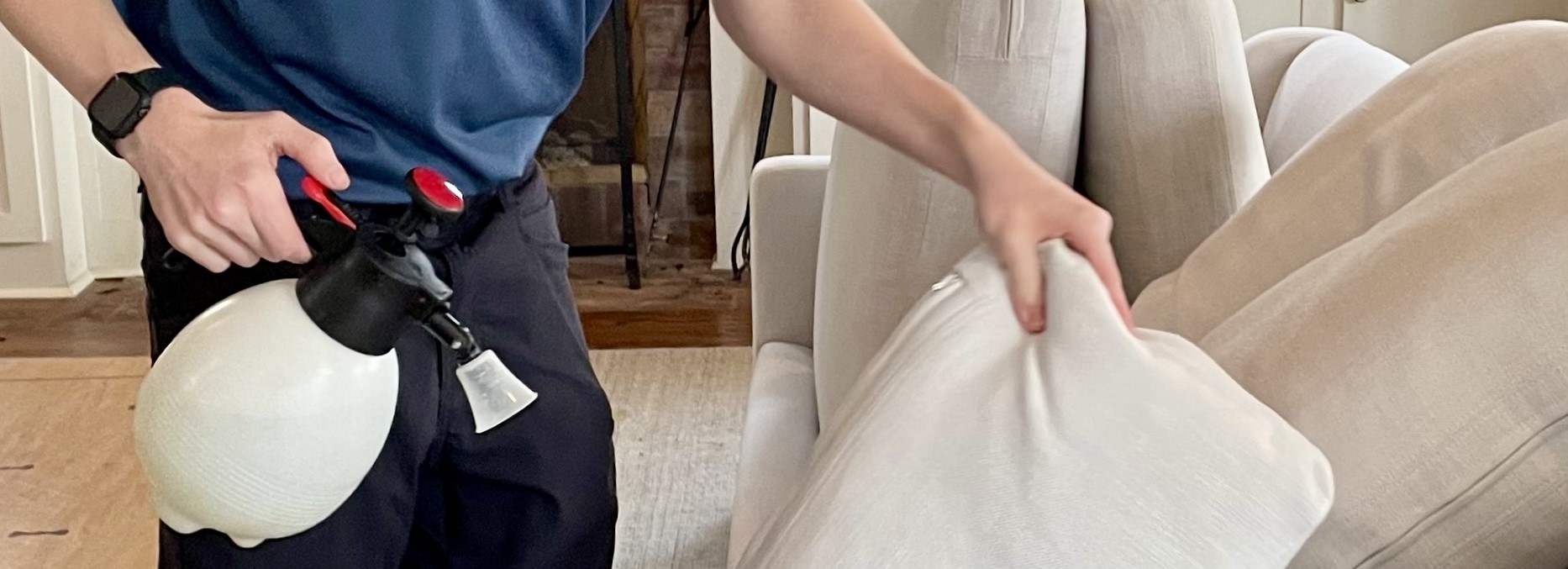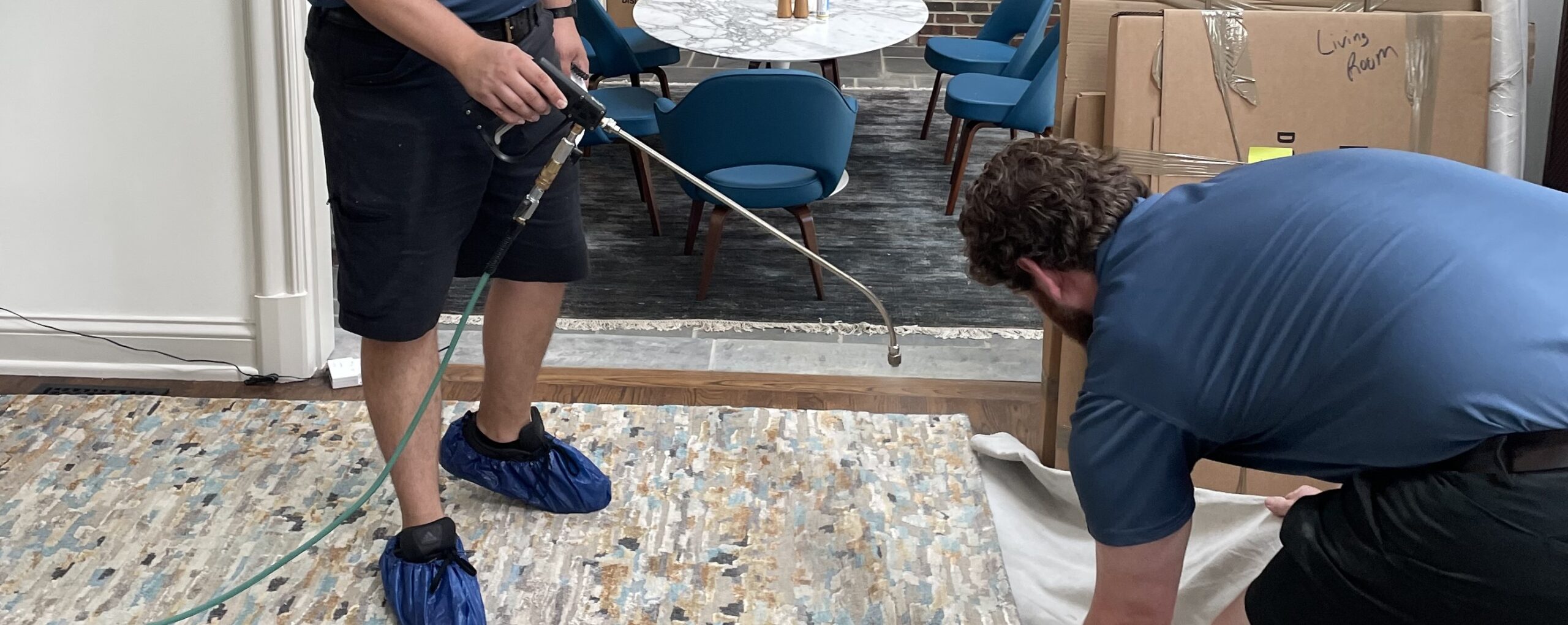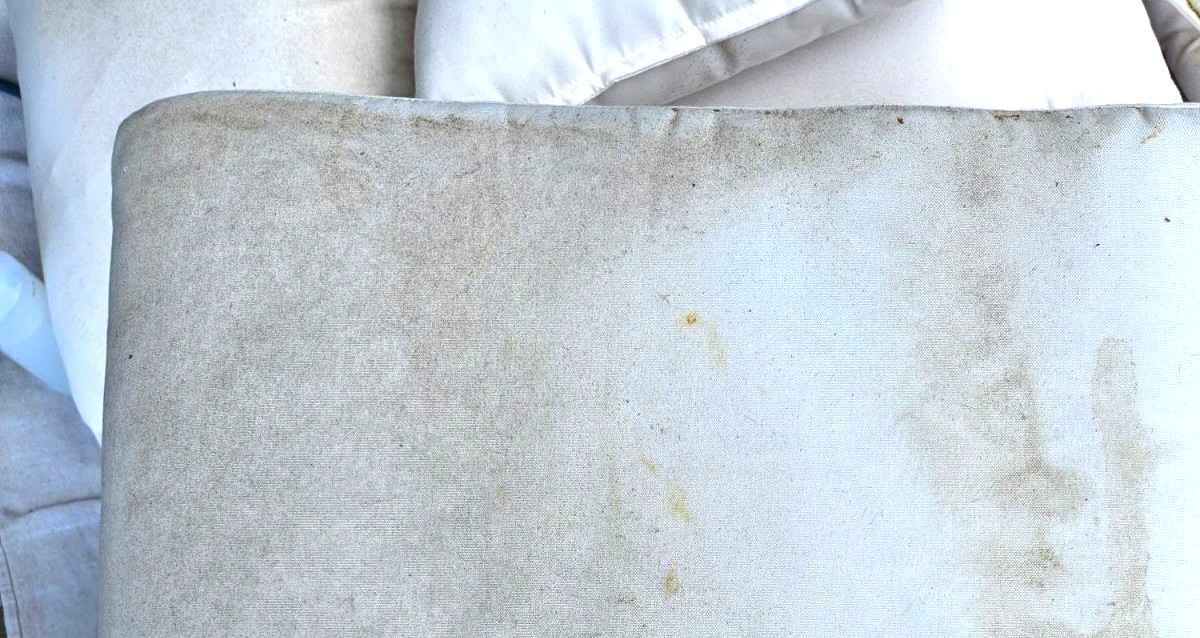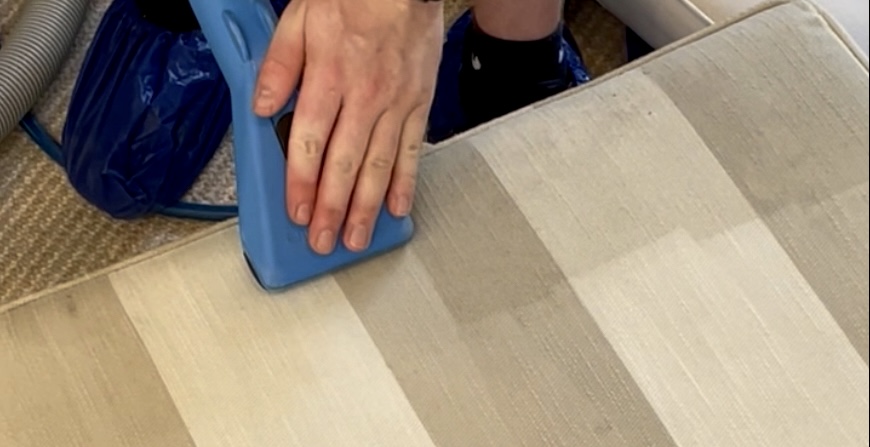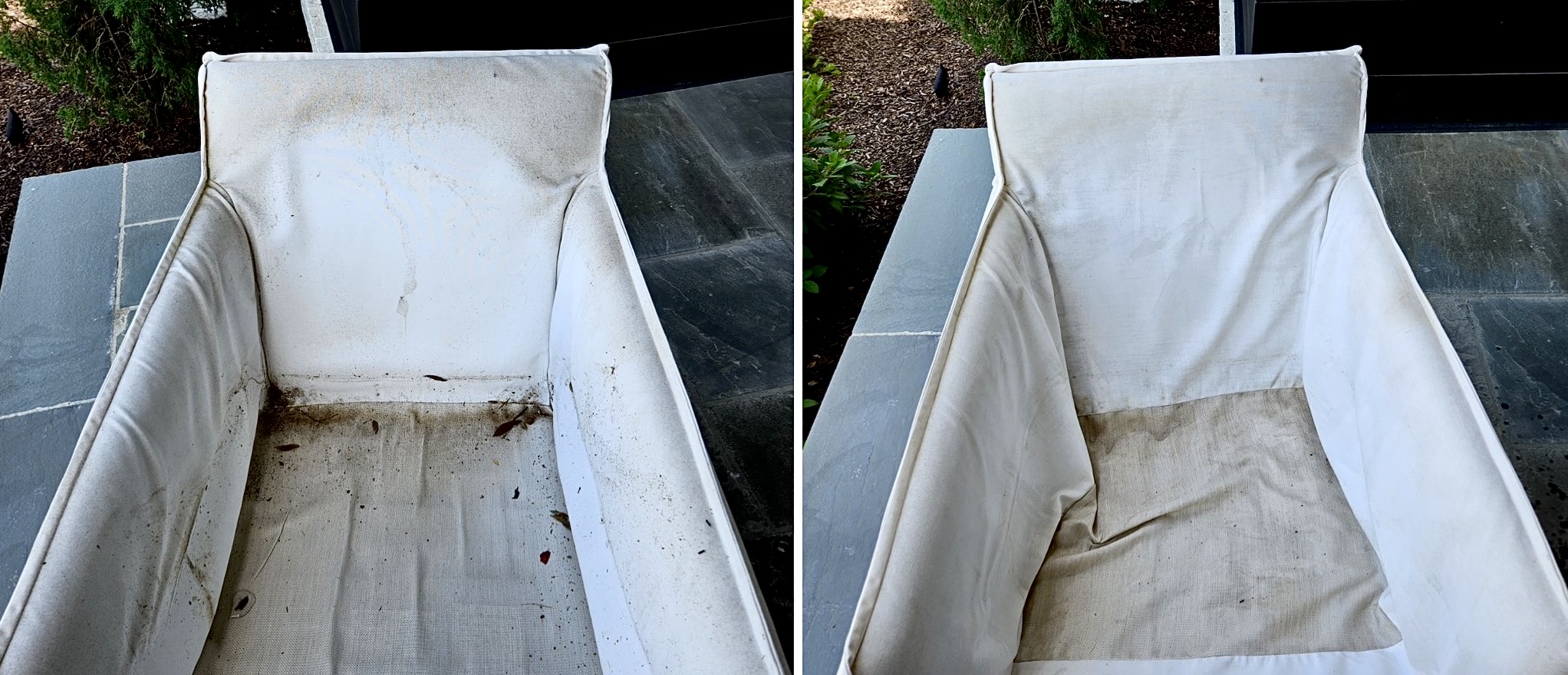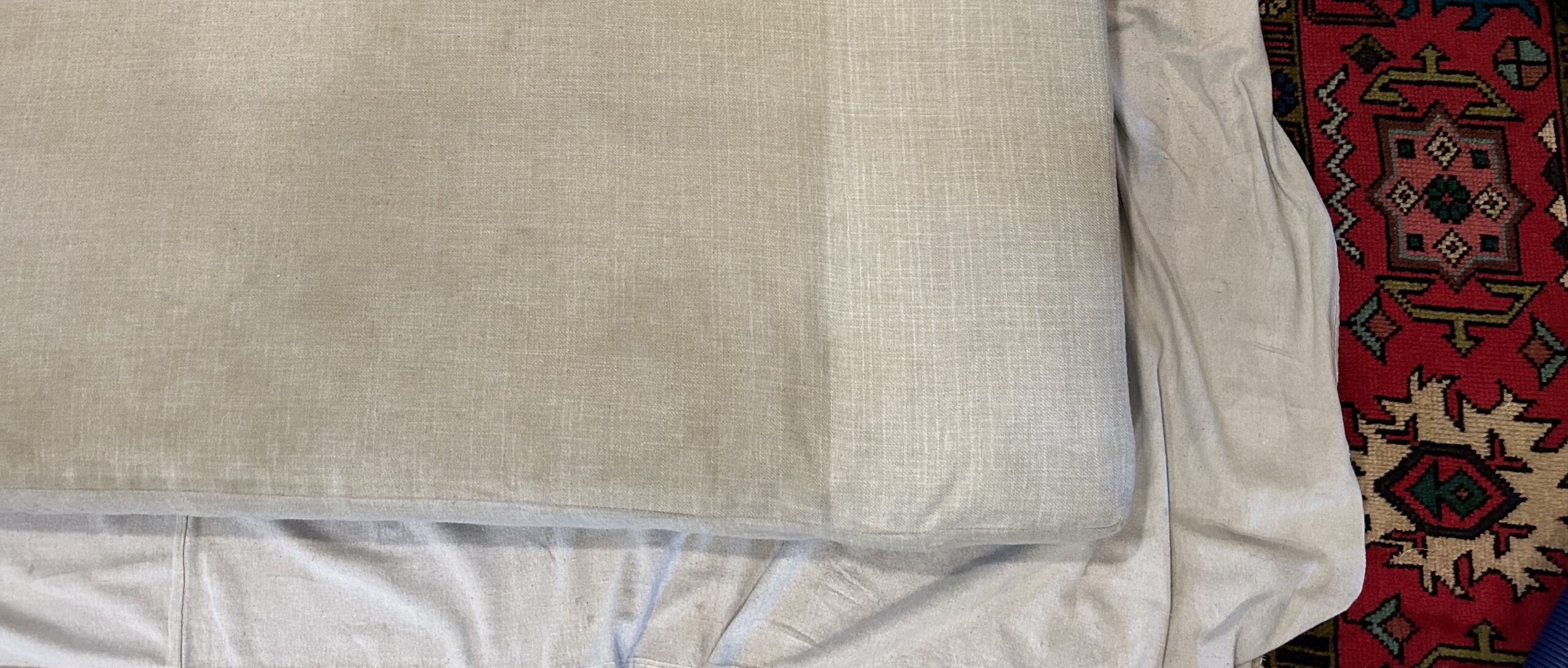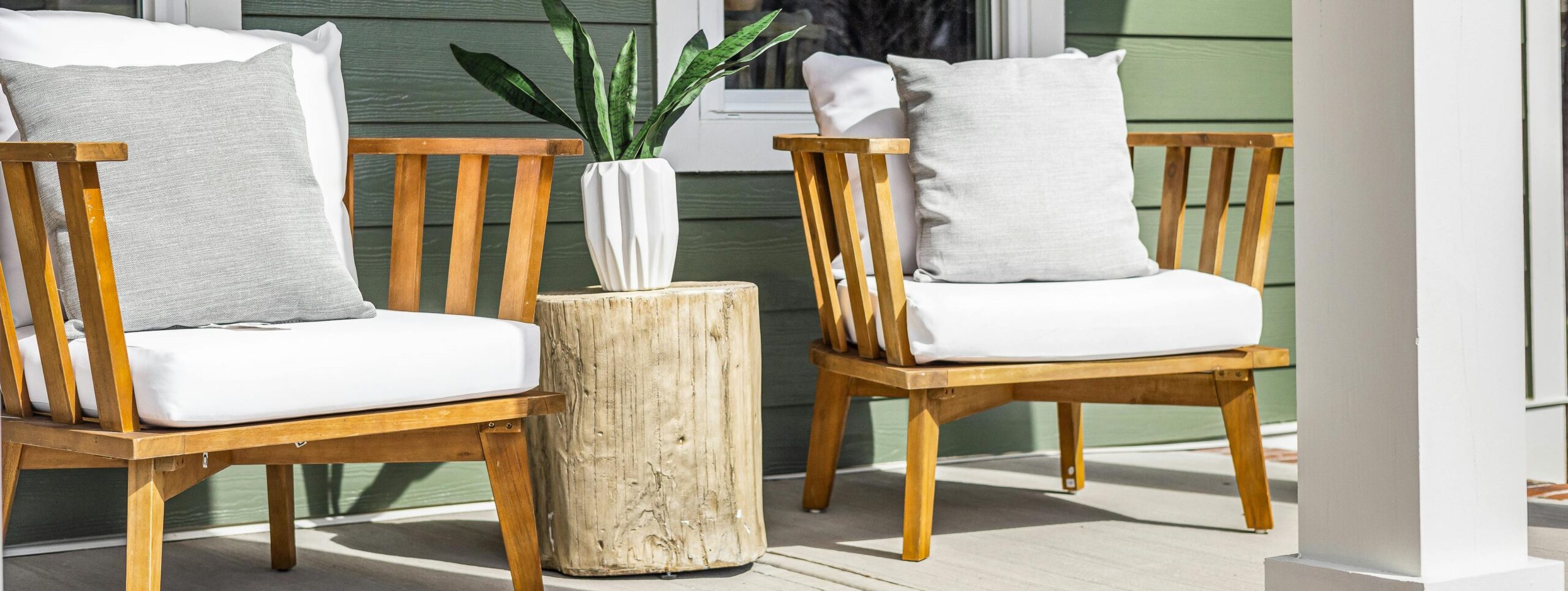While Every Performance Fabric is hardy, Each has different protective qualities, suited to particular settings and uses. Sometimes the longevity of a performance fabric can be enhanced with the application of a surface protectant.
Should I Protect my Performance Fabric?
Good question! Not all performance fabrics are equally robust. But not all protectants are right for every situation. However, it is possible to achieve the best overall performance with a combination of the two. Professional cleaners will tell you that applied protection is often unncessary, especially for fabrics rated for outdoor use, and that is true, most of the time. But there are a few instances where this two-pronged strategy is a smart investment. To determine whether protection can enhance the longevity of your peformance fabric, let’s start with a quick survey of the most popular fabric brands and the protection products available for residential use.
Performance vs. Protection
By design, performance fabrics perform better in demanding environments. The hospitality sector, healthcare settings and other commercial spaces have always needed textiles that can stand up to hard use and abuse. But now, we’re seeing more and more of these hardy fabrics used in residential applications, not only for outdoor furnishings but also interior upholstery. After all, homeowners want the same advantages as commercial clients do – whether that is cleanability, repellency or even durability.
There are a host of ways a fabric can perform but no one fabric does it all. Some textiles bead up when exposed to spilled liquids. Others resist staining. And others still help upholstery withstand UV damage. When it comes to shopping performance fabrics, choose the best textile for your home and lifestyle. Not sure where to turn for advice? Talk to a designer or read a few informative articles covering the things you need to know about performance textiles. But let’s keep it simple and limit this discussion to four performance fabric types – olefin-based textiles like Revolution, acrylics like Sunbrella, microfibers like Ultrasuede, and ‘treated’ fabrics like Crypton.
Sometimes the decision to protect a textile comes down to the setting in which the fabric will be used. Whether used in an active family’s favorite room or a porch or deck exposed to the elements year round, a performance textile can be hardy and stain resistant. But that doesn’t mean that a professional cleaning can restore the like-new appearance of your well-loved upholstery. That’s where applied protection will take your cleaning to the next level. The best protectant will encapsulate the fibers of your fabric, conferring a host of protective qualities that overlap and enhance the strengths your performance fabric already provides.
Can Protection Damage Performance?
This is a key question and answering it requires a brief review of topical protectants on the market. Unfortunately, some of the best known protection products on the market are not the best choices for residential use. Fluorochemicals are formulated to repel dirt, water and grease but they can be unsafe for family spaces. Scotchguard and Teflon are two such fluorochemical substances. The name “Scotchguard” is so recognizable that it has often used as a verb for the application of a topical protectant. In other words, whether or not they use the product, professional companies are often asked “Can you Scotchguard my sofa?”
But Scotchguard, for all it’s been around a few years, has real drawbacks. One ingredient in the formula a “forever chemical,” called a PFOS, is linked to immunosuppression, hormonal imbalances, reduced fertility and increased risk of cancer. The Teflon of the past was thought to be equally harmful to health though the formulation was changed in 2013. However, the PFOA component of the early Dupont protectant has contaminated our drinking water and the packaging of consumer goods.
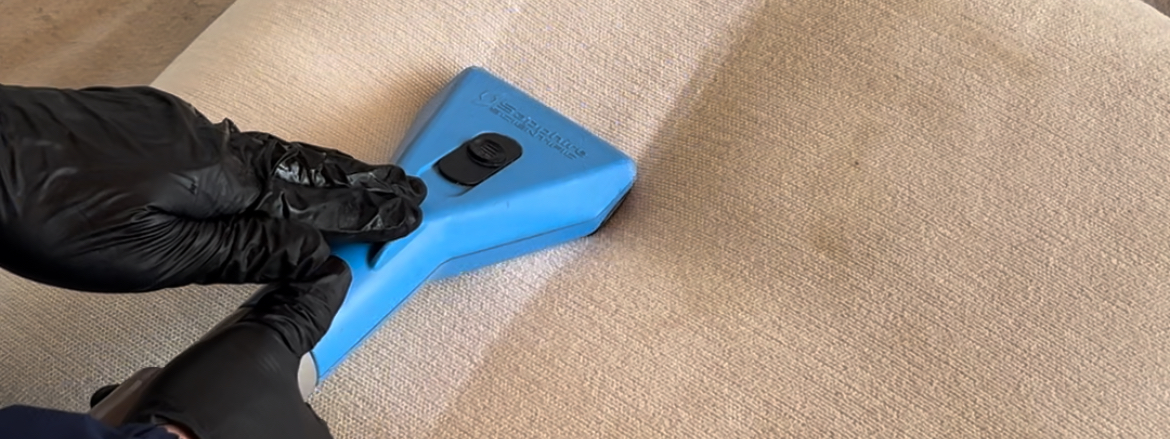
Another concerning protectant ingredient is silicone. While sprays containing silicone were popular in the past, we’ve since learned that the product can change the texture of your upholstery and yellow that fabric over time. It can also attract dirt.
Happily, the fabric protector spray market has expanded in the past decade. The best protectants are both family and earth friendly. Also, they contain no fluorocarbons or silicates. At Pro-Care, we’re big fans of a product called Fiber ProTector. This protectant encapsulates the fibers of a textile, whether a rug or carpet or that performance upholstery. Fiber ProTector has been shown to be non-toxic, hypo-allergenic and bacteriostatic and has been around since 1994. Manufactured in two formulations, the water-based line of protection from this company recently received the WoolSafe EnviroSeal certification. This is the only fabric protector ever to receive such a certification. Read published test results to learn more about the safety of Fiber Protector.
Durability Booster
Performance fabrics are often used in high-traffic areas or outdoor settings. Applying stain protection helps to enhance the durability of these fabrics by creating a barrier against spills, dirt, and other substances that could potentially degrade the fabric over time. It can also reduce the sort of friction that pulls at fibers and decreases their lifespan.
Take an acrylic fiber like Sunbrella. Although this performance fabric is not waterproof, it repels water and dries quickly. These characteristics make it resistant to mold. That said, acrylic cushions left out on a patio or pool deck year round, exposed to constant dampness or stored outdoors where pests can access and contaminate them, may suffer staining and mildew growth.
Acrylics are also expensive and can be vulnerable to fraying, tearing and seam separation. An applied protectant like Fiber ProTector encapsulates fibers and reduces the friction that causes structural damage, delaying the need to replace your furnishings. While you might not choose protection to outdoor furnishings for stain repellancy, you might add it to beef up the fiber’s durability.
Enhanced Functionality
When it comes to a high-performing textile, it is not always the spill or stain that you have to worry about. Revolution fabric is a highly popular choice in the performance market. This olefin-based fiber is man-made and solution dyed. Manufacturers rate Revolution for indoor and outdoor use, dependant on individual fabric type. Revolution fabrics are also resistent to fading. What’s more, they blocks mold, mildew and bacterial contamination. So why would you ever add a layer of protectant to what seems to be a bulletproof option?
Well, every performance fabric has an Achilles heel. Olefin (or polypropylene), is vulnerable to oil-based soiling. Let’s say a buyer chooses an olefin like Revolution for her outdoor dining set. That is great for spilled sangria or hot tea. But what about greasy barbecue, oily salad dressings, or kids running around with hot dogs and hamburgers, slathered with ketchup? You get the idea. There are a lot of settings, indoors as well as outdoors, that expose upholstery to oil. Add to that, the use of sunscreen. After all, outdoor furnishings are regularly exposed to oily skin and skin products.
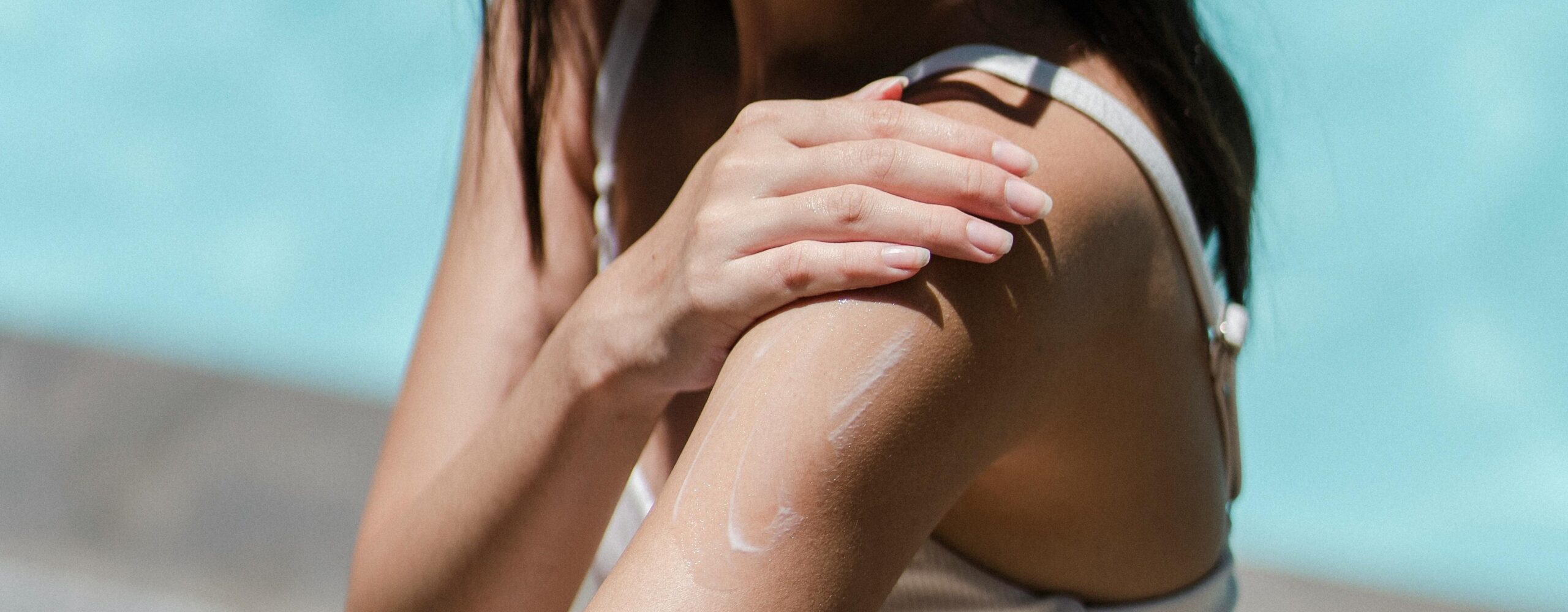
An applied protectant, when paired with an olefin, helps the performance upholstery hold off oil-based discoloration and gives professionals a fighting chance to remove oils from outdoor sofas, sectionals, and upholstered chairs. Put another way, it’s not always about the spot and spill resistance, which a performance fabric might well provide. Instead, it has to do with the success of the next professional cleaning. Stains are one thing and usually you can blot up that obvious accident. But general grunge, while not always apparent, builds up regardless of fabric type. A nano-tech protectant can keep grunge on the surface until your service provider extracts it away.
Ease of Maintenance
Sometimes, the application of a protective layers to a performance fabric makes it easier to clean and maintain. Unlike acrylic or olefin fibers, Crypton is a treatment that bathes traditional fabrics and fabric blends in a protective treatment. Spills and stains are less likely to penetrate the fabric’s surface and become deeply ingrained, making soil simpler to wipe away or clean with mild detergent.
Be mindful, though. You can void the 5-year warranty for Crypton if you choose to apply a topical protectant to it. Trustworthy service companies will work with you to clean your chair or sofa while the upholstery is under warranty and then protect it after the warranty (and much of the performance value) expires. At the end of the day, though, it is important to remember that under Crypton’s performance solution, the base fabric can be a vulnerable fiber, like a cotton or linen. What’s more, highly textured textiles with a “grabbing” quality can wick dirt and oil from hands and hair. After mutiple professional cleanings and exposure to everyday soiling, it is wise to consider an application of surface protectant to a Crypton fabric.
At Pro-Care, we often partner with interior designers doing whole-house projects. It is common for these pros to call us with a request for fabric protection so their clients can enjoy peace of mind, even for outdoor furnishings. A year or two on, we love the opportunity to go back and clean performance furniture that has been topically protected. These jobs always make for amazing before-after pictures!
Resistance to Contamination
Manufacturers formulate performance fabrics, especially the outdoor-rated varieties, to resist bacterial growth. But some interior fabrics, like microfibers, are less able to hold that sort of contamination at bay. While your Ultrasuede sofa may resist discoloration due to spills, it may not provide a bacteriostatic surface that will protect the textile from the growth of mildew or mold.
Applied protection slows the absorption of liquids like red wine and hot coffee and can also provide bacterial resistance. The best protectants contain an ingredient that makes the fabric surface unfriendly to contamination and bacterial growth. The added benefit is that a protective layer gives a professional cleaner the opportunity to restore upholstery to like-new condition. It maximizes soil removal and the kind of grunge left behind from skin and hair oils on the arms and backs of sofas and chairs.
Water Proofing and Warranties
Let us offer a few quick clarifications. First, applied protection does not turn an interior-rated textile into an outdoor performance fabric. Topical protectant cannot hold weather damage at bay and Fiber Protector will not confer waterproof qualities to your cotton cushions. If you need a hardy outdoor (or indoor) option, start with a performance fabric and then consider how a topical protection application can enhance longevity and cleanability.
And here’s a final word about warranties. A buyer always has to weigh the pros and cons of applying surface protectant which can void the warranty on her furniture. A new sofa or chair usually comes with warranty coverage. But here’s the kicker. If you read the small print, you’ll see that the warranty on your furnishings rarely covers the fabric. We’re serious. Even though the upholstery is the component most likely to sustain damage – in fact BECAUSE the upholstery is likely to sustain damage – manufacturers rarely guarantee fabric for more than a year or two.
The warranty on a piece of furniture covers failure of the structural elements. It guarantees the durability of the wood framing, spring systems, and sometimes cushion stuffing, but not the fabric. A buyer has to decide whether to trade general warranty coverage for specific stain and wear resistance.
Conclusion
For many clients, the best strategy is to start with regular professional cleanings of their performance upholstery. This routine will insure the best resistance to accumulated grime, soil, and contaminants. Once the warranty coverage expires, these clients schedule a deep cleaning and protection application. This compromise gives their investment the best likelihood of outlasting structural and textile damage and sets up the conditions for successful long-term performance.
By pairing protection with performance, you can just relax and let life happen. Periodic mishaps, challenging conditions, heavy wear and tear, and bacterial exposure will not impede your enjoyment of your performance upholstery.
So let the sangria, kool aid, sunscreen and barbecue sauce flow. When you pull those protected cushions out of storage this summer, schedule a cleaning and re-protection. Help your performance fabrics perform better, stay clean longer, and hold contamination, stains, and grunge at bay. Consider adding a protective layer to your favorite performance furnishings.

For more about Fiber ProTector, see our our FAQs…

